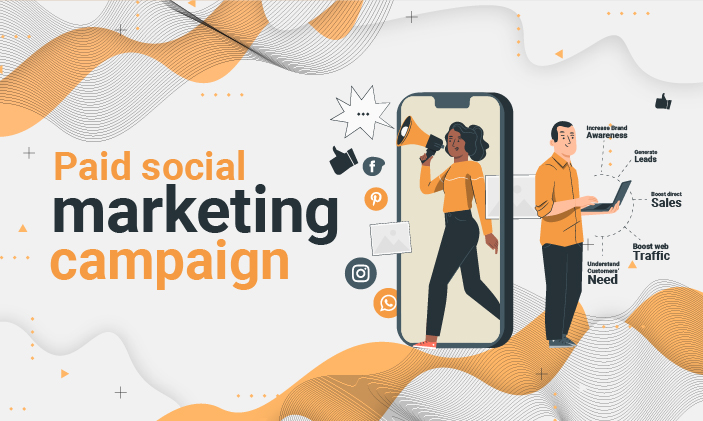Scaling a paid social campaign demands precision, foresight, and a robust strategy grounded in data. Without meticulous preparation, businesses risk wasting budgets, alienating audiences, or missing growth opportunities. We’ve compiled an exhaustive guide to help marketers navigate this process, ensuring campaigns deliver measurable results while maintaining efficiency. Below, we outline critical checkpoints to evaluate before expanding your paid social efforts.
Assessing Campaign Performance Metrics
Before scaling, scrutinize your campaign’s performance metrics to confirm its viability. Key performance indicators (KPIs) like cost per acquisition (CPA), return on ad spend (ROAS), and click-through rate (CTR) provide insight into efficiency and effectiveness. For instance, a CPA that exceeds your target signals inefficiencies that must be addressed before increasing budgets. Similarly, a low CTR may indicate poor ad creative or audience misalignment. Use tools like Google Analytics or platform-specific dashboards to track these metrics over at least 30 days for reliable data.
Beyond surface-level metrics, dive into conversion funnels to identify bottlenecks. Are users dropping off at the landing page? Is the checkout process seamless? Addressing these issues ensures scaling amplifies success rather than magnifies flaws. We recommend setting benchmarks based on industry standards—WordStream’s ad benchmarks offer a solid reference point.
Validating Audience Segmentation
A well-defined audience is the backbone of any paid social campaign. Before scaling, verify that your audience segments are precise and responsive. Platforms like Facebook Ads Manager and LinkedIn Campaign Manager allow granular targeting based on demographics, interests, and behaviors. However, overbroad or overly narrow segments can skew results. For example, targeting “all women aged 18-65” dilutes relevance, while hyper-specific niches may limit scale potential.
Conduct A/B tests to refine segments. Test variables like location, income level, or purchase intent to pinpoint high-performing groups. Additionally, leverage lookalike audiences—available on platforms like Instagram and TikTok Ads—to expand reach without sacrificing precision. Ensure your customer data platform (CDP) integrates with ad platforms for accurate tracking, as outlined in Segment’s CDP guide.
Optimizing Ad Creative and Messaging
Compelling ad creative drives engagement, but even high-performing assets can fatigue over time. Before scaling, audit your visuals, copy, and calls-to-action (CTAs). Are images pixelated or outdated? Does copy resonate with your audience’s pain points? Platforms like Canva Pro and Adobe Photoshop offer tools to refresh visuals, while Copy.ai can generate persuasive ad copy.
Test multiple creative variants to identify winners. For instance, carousel ads may outperform single-image ads on Pinterest, while video ads dominate on Snapchat. Monitor creative wear-out by tracking frequency metrics—if an ad’s frequency exceeds 3, it’s likely overexposed. Replace fatigued assets to maintain engagement, as advised by Social Media Examiner.
Working with a meta advertising agency can streamline this process. These specialized firms excel at crafting platform-specific creative that aligns with Meta’s algorithms, ensuring your ads remain fresh and effective across Facebook and Instagram. Their expertise in audience targeting and creative optimization can significantly boost campaign performance before scaling.
Ensuring Budget and Bidding Alignment
Scaling requires a proportional increase in budget, but misaligned bidding strategies can erode returns. Review your bidding approach—whether cost-per-click (CPC), cost-per-impression (CPM), or cost-per-action (CPA)—to ensure it supports your goals. For awareness campaigns, CPM may suffice, but conversion-focused campaigns benefit from CPA bidding. AdRoll’s bidding guide offers practical insights for optimization.
Simulate budget increases using platform tools like Facebook’s Budget Optimization to predict outcomes. Avoid abrupt budget spikes, as they can disrupt algorithms and inflate costs. Instead, increase budgets by 20-30% weekly, monitoring performance closely. This gradual approach, endorsed by PPC Hero, minimizes risk.
Verifying Landing Page Performance
A high-converting landing page is non-negotiable when scaling paid social campaigns. Slow load times, poor mobile optimization, or unclear CTAs can sabotage results. Use tools like Google PageSpeed Insights to assess load times—aim for under 3 seconds. Ensure pages are mobile-friendly, as over 60% of social traffic originates from mobile devices, per Statista.
Test landing page elements like headlines, forms, and trust signals (e.g., reviews or certifications). Tools like Optimizely facilitate A/B testing to maximize conversions. Align landing page messaging with ad copy to maintain consistency, reducing bounce rates. For ecommerce, ensure checkout processes are frictionless, as cart abandonment rates can exceed 70%, according to Baymard Institute.
Monitoring Platform Algorithm Changes
Social platforms frequently update algorithms, impacting ad delivery and costs. Before scaling, research recent changes on your chosen platforms. For example, Meta’s 2024 algorithm prioritizes engagement over reach, per Social Media Today. Similarly, TikTok’s algorithm favors native-style content, as noted by TikTok’s Business Blog.
Stay informed through industry newsletters like Marketing Dive or platform-specific blogs. Adjust strategies to align with updates—e.g., prioritize video content if platforms reward it. Failure to adapt risks reduced visibility and wasted spend.
Planning for Scalability Risks
Scaling amplifies both opportunities and risks. Anticipate challenges like audience saturation, increased competition, or supply chain constraints (for ecommerce). Monitor competitor activity using tools like SpyFu to avoid bidding wars. For physical products, confirm inventory levels to prevent overselling, a pitfall highlighted by Shopify’s inventory guide.
Establish contingency plans, such as pausing underperforming ads or reallocating budgets to top-performing segments. Regularly review campaign data to catch issues early. This proactive approach ensures scaling remains sustainable and profitable.
Conclusion
Scaling paid social campaigns is a high-stakes endeavor that demands rigorous preparation. By evaluating performance metrics, refining audience segments, optimizing creative, aligning budgets, testing landing pages, adapting to algorithm changes, and planning for risks, marketers can confidently expand their efforts. These steps, grounded in data and strategy, pave the way for sustained growth and meaningful ROI. Commit to ongoing optimization, and your campaigns will thrive in the competitive social advertising landscape.

